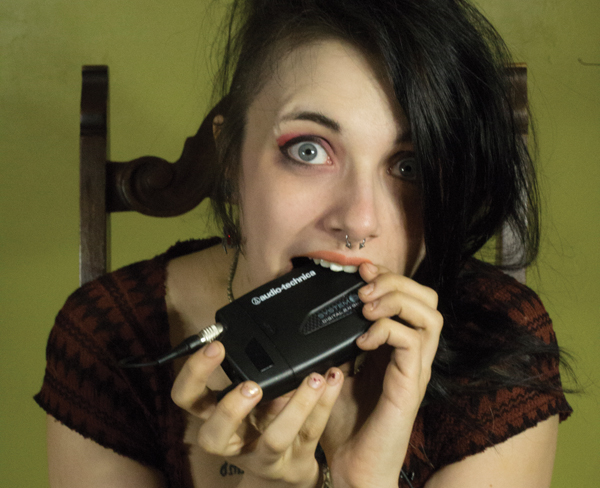I always lament how frustrating it is to get a quick setup for a basic video interview. So when I was given the opportunity to take a test run of the Audio-Technica System 10 camera mount wireless mic setups, I was excited to see if it might be the solution to a simplified, dynamic rig.
I often “run-and-gun” to make brief band updates and behind-the-scenes videos for the web. For this purpose, I shoot on an entry-level Canon Rebel T4i, which like virtually all DSLRs, lacks a usable audio system. When I need audio, I typically connect and mount a full recorder on top of the camera using a boot-mount adapter. I then connect a cumbersome adapted microphone wire to it from a lav-mic receiver that I put in my pocket or tape to my body, or I run a wire from the recorder to the talker for a wired handheld mic. This always creates a wiry mess and requires adjusting levels on the mic, gain control on the recorder, and gain control on the camera.
As my first test, I recorded a series of rehearsal-space and backstage interviews for the Bring Us Your Women multimedia show. To put the System 10 to work and see if it could serve to replace my usual setup easily, I just mounted the receiver on the camera, plugged it in, turned on the receiver and the transmitter, and hit the pair button so they would “talk” to each other. Once paired, I handed the ATW-1701/l lav to the talker, which they clipped to their collar. The automatic gain control system on the camera kicked in, giving usable sound within just a few seconds. Even in a noisy practice space, I was able to interview my subjects with minimal background noise. Switching to the 1702 system took only a quick pairing, and then I could record from the handheld microphone just as easily.
In order to test everything in a more controlled environment, I also recorded interviews for The Lesbian Spider Cult Kickstarter campaign. This utilized the microphone in a more traditional filmic way, with hidden placement and higher sound-quality demands. For comparison, I also had the talkers wear a second common, and more expensive, lav mic. The ATW-1701/l microphone casing was very good for preventing clothing rustling noise, even with little effort to pad or isolate the microphone, and the frequency response, which I plotted after the fact to objectively assess, was quite flat, and actually more responsive at high frequencies than the other microphone we used.
The recordings sounded full-bodied and clean, with a surprisingly nice low-frequency response that did not get muddy. The battery life seemed good, too, as neither component needed a charge or battery swap in the six hours of initial use. Both mics were easy to setup, sounded great, and did not have any issues with transmission or interference. The System 10 receivers with camera mount outperform any other low-cost solution I’ve used for run-and-gun video, and they serve as a big improvement over just the in-camera sound.
ABOUT THE AUTHOR
Michael J. Epstein is a Boston-based musician, filmmaker, and university professor. He is also a member of several area bands including The Michael J. Epstein Memorial Library, Do Not Forsake Me Oh My Darling and Darling Pet Munkee. His most recent project is the independent film Magnetic, which is now screening. For more, visit michaeljepstein.com.
